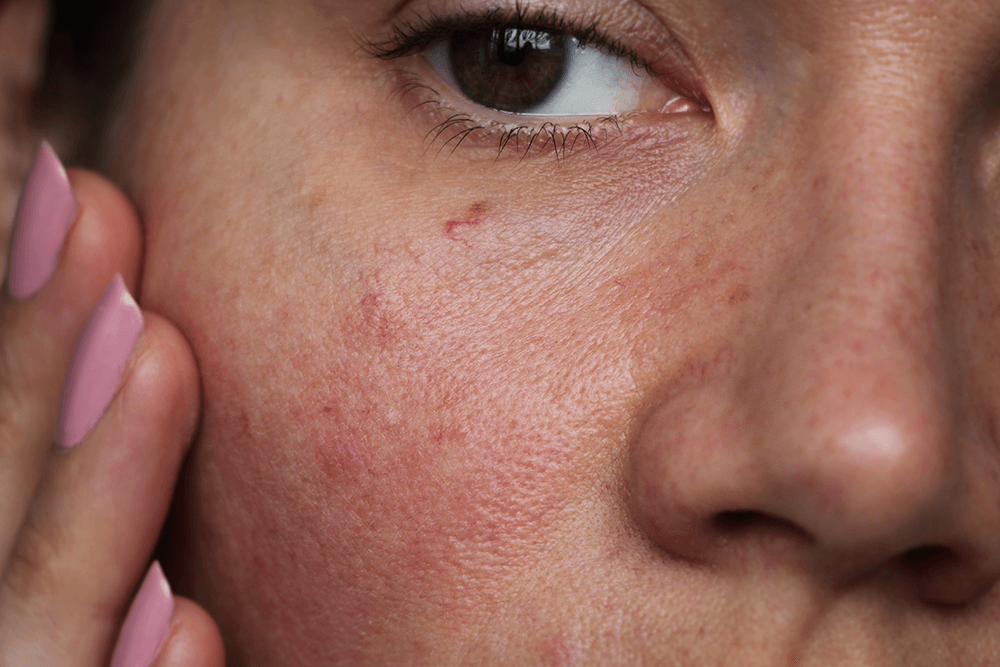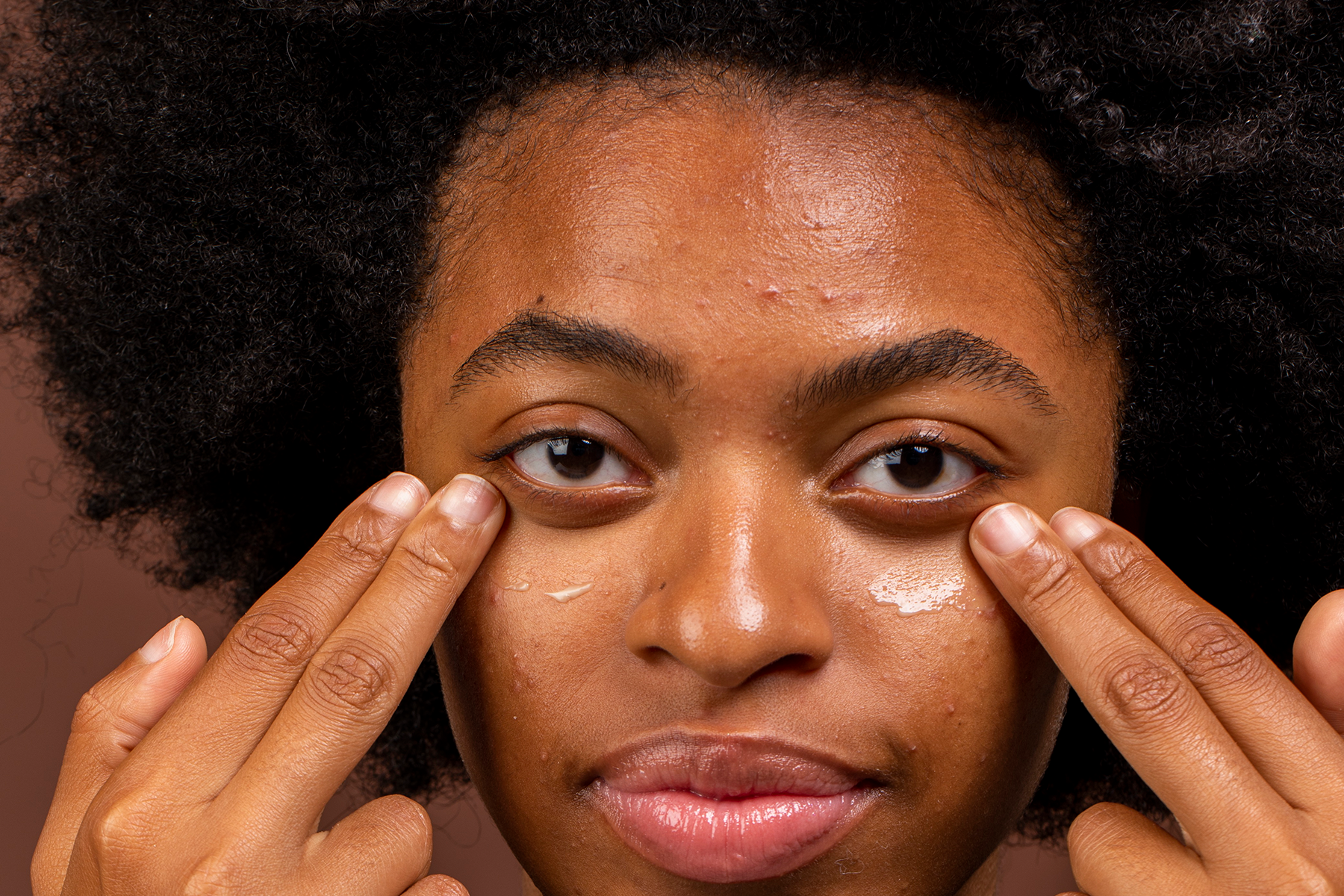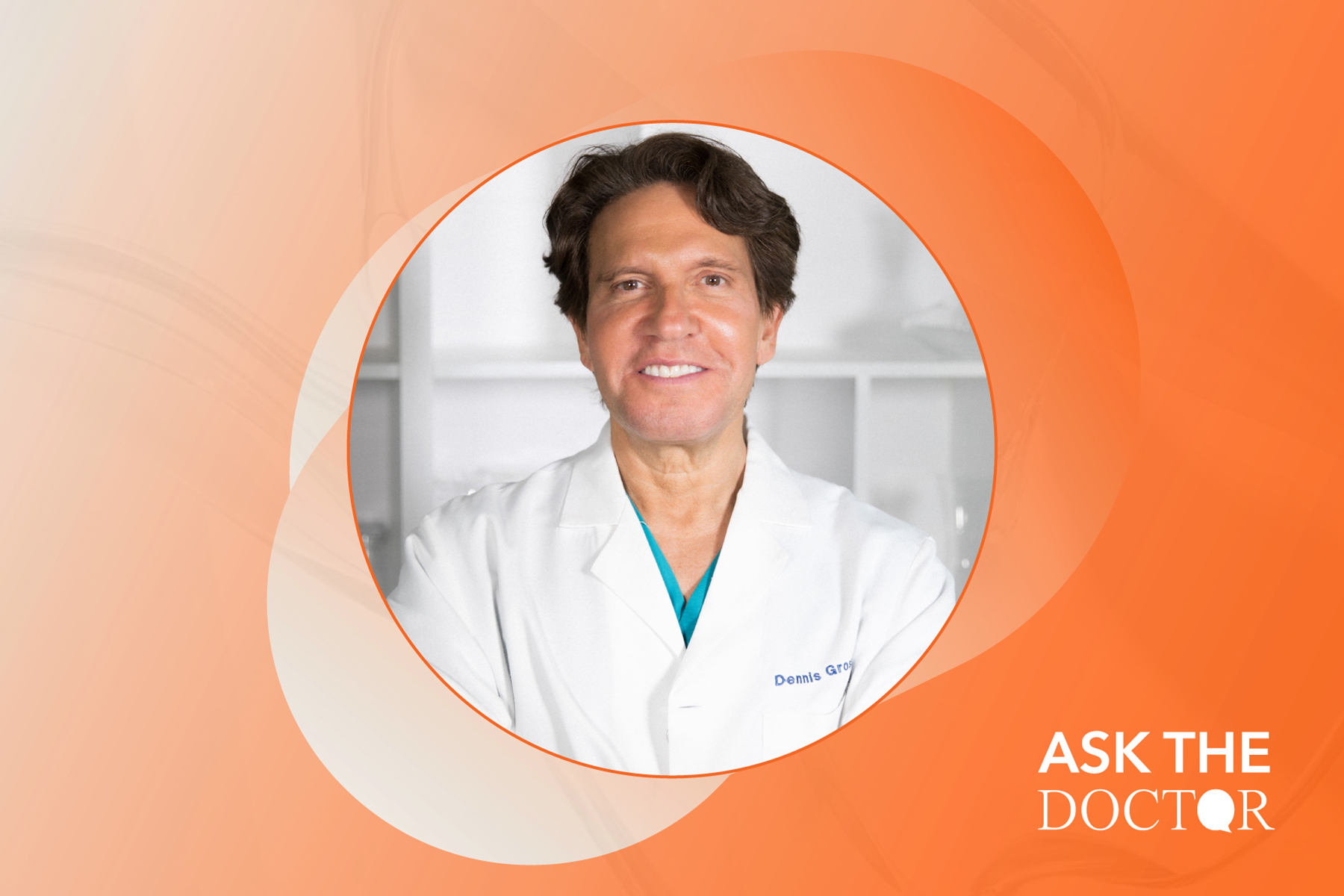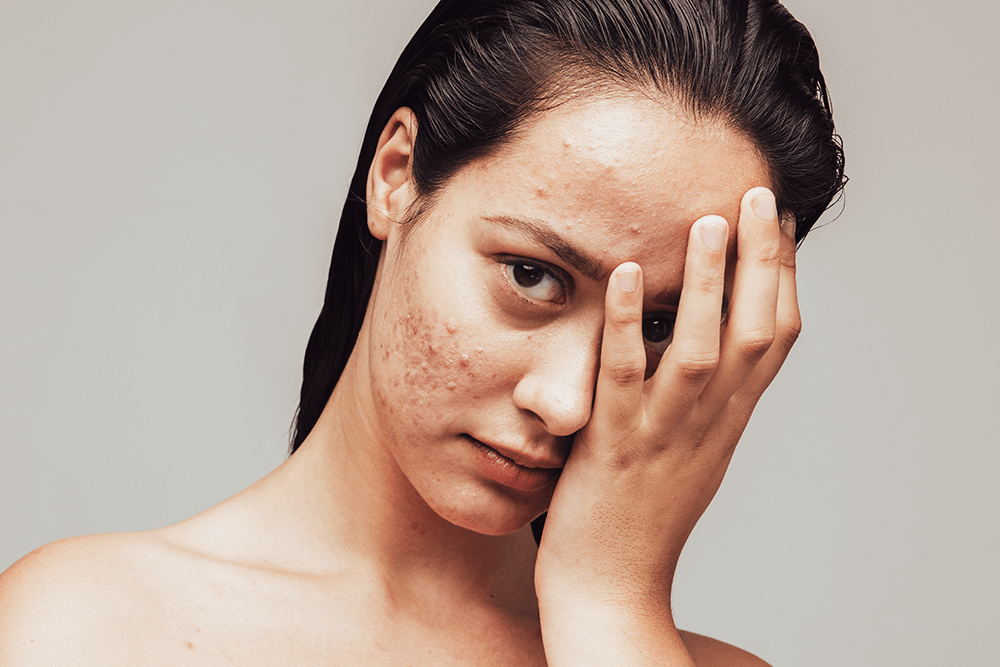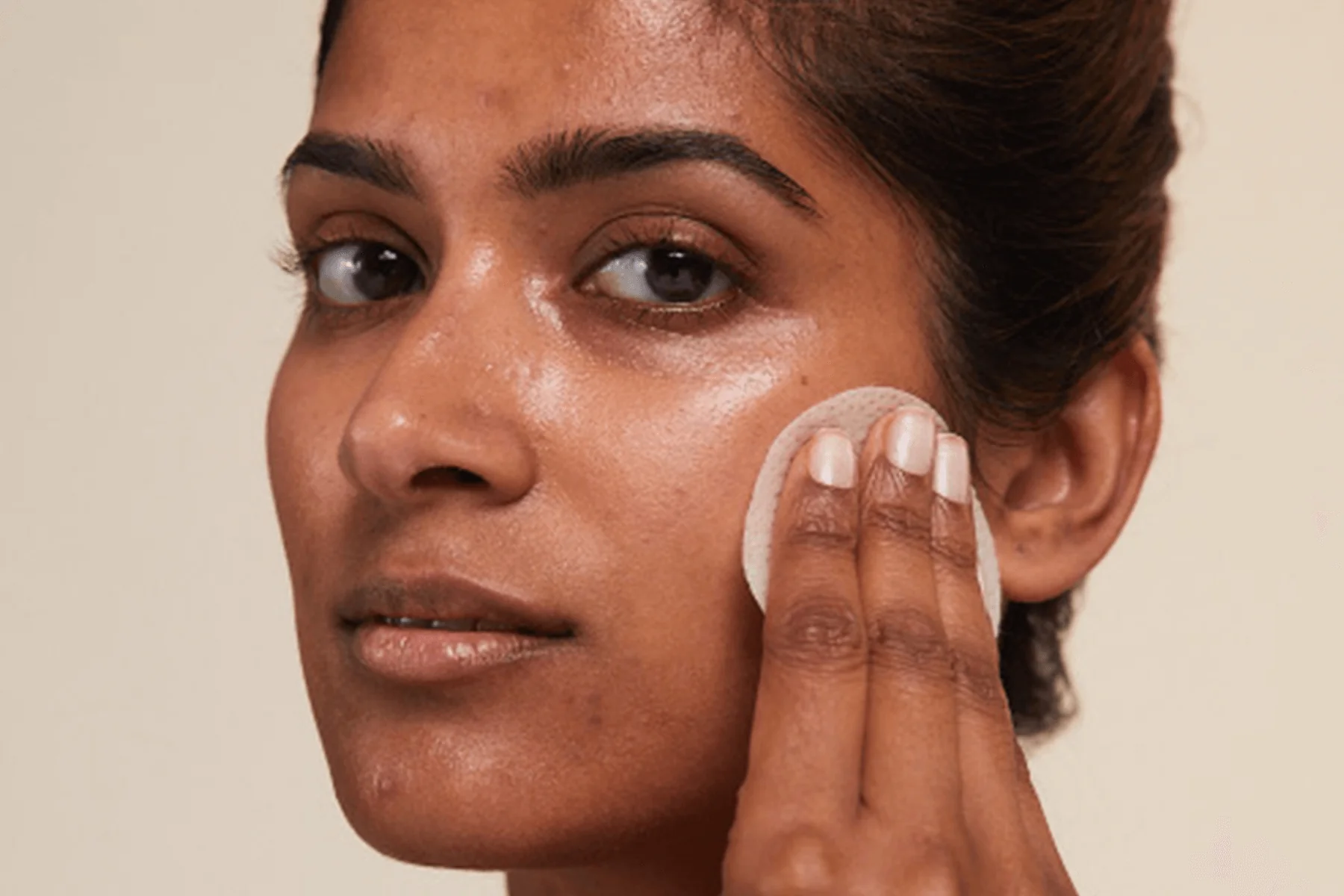The+Source
A rosy flush on your cheeks is a good thing, but there’s a big difference between a hint of healthy color and splotchy redness. Everything from rosacea to hot weather or even spicy food can trigger redness on your face. To find out what may be causing your overboard blushing, and learn the best ways to get the red out, read on.
What Causes Redness on The Face
Let’s start with what happens physically when your face reddens. When you get overheated, for example – due to a fever, exercise, eating spicy food or being in a hot environment – your body cools you down by dilating tiny blood vessels so heat can dissipate through the surface of the skin. This kind of physical reaction may happen when you’re stressed, embarrassed, or anxious too. All of a sudden, your face feels hot and you have a magenta tie-dyed-looking rash spreading from your chest up to your hairline. This is your body’s natural stress response, releasing adrenaline that boosts circulation and causes your vessels to vasodilate. Medications (such as Adderall, and niacin taken to reduce cholesterol) can also accelerate blood flow to the skin and cause flushing.
Common skin issues that cause redness on the face
We’ve all been there: You over scrubbed, or maybe layered on too many active ingredients (like retinol or vitamin C) and now your face is red and irritated. This is a sign that your skin barrier has been compromised, and needs to be repaired with the right calming and moisturizing ingredients. (We’ll get to those in a minute.) Another barrier compromiser? Dry skin and eczema (atopic dermatitis) – a genetic type of rash that makes the skin sensitive, parched, rough, and red.
Rosacea
Rosacea is a chronic and very common inflammatory skin condition that can generate mild flushing or persistent redness (and even broken capillaries) typically in the center part of the face. Sometimes that redness is accompanied by tiny pimples, which can be confused with acne. (Rosacea typically occurs in people who are between 30 and 50 years old, whereas most acne patients are under 25.) Rosacea can be exacerbated by sun exposure, steamy hot showers, or even drinking red wine, which can trigger a rush of blood circulation to the surface of the skin.
Acne and inflammatory pimples
Acne causes inflammatory pimples that can make the surrounding skin red. It can be difficult to tell the difference between acne and rosacea, but adult acne typically shows up around the jawline, not the center of the face. And acne usually doesn’t create an overall flush like rosacea does.
What products and ingredients help to reduce redness?
Sensitive skin types take note: If you are prone to redness, then anti-inflammatory ingredients like aloe, colloidal oatmeal, chamomile, green tea, niacinamide, and allantoin are your go-to skin soothers because they help to calm inflammation. You also want to focus on moisturizing with barrier-repairing ingredients such as ceramides, glycerin, and squalene. And daily sunscreen is a must, especially for rosacea-prone skin that can be triggered by UV exposure. Stick with a mineral-based SPF that has zinc oxide and titanium dioxide, which won’t irritate sensitive skin like some chemical sunscreens can. In fact, zinc has anti-inflammatory properties and (despite what you might think) does not clog pores. (Check out Dr. Dennis Gross Skincare All-Physical Lightweight Wrinkle Defense Broad Spectrum Sunscreen SPF 30.)
How to reduce different types of skin redness
Whether your flushed complexion is due to a case of skin irritation, dryness, or rosacea, there are smart tips and specific products that will help control redness and reduce skin inflammation.
How to reduce redness from irritation, dry skin, and eczema
When your skin is dry, red, itchy, or stingy, your routine should be all about TLC. Use a mild, ultra-gentle cleanser like Dr. Dennis Gross Hyaluronic Marine Meltaway Cleanser that removes makeup, oil, and dirt without stripping natural lipids from your skin. Bonus: It also contains skin-soothing aloe to calm redness. Be sure to wash with lukewarm water, since hot temps can dehydrate the skin. Now, moisturize like crazy to repair the impaired barrier with hydrating and emollient ingredients like glycerin, hyaluronic acid, squalene, or sweet almond oil.
How to reduce redness from acne
With acne-prone skin, it’s important to keep your pores clear of dead skin cells, oil and dirt in order to prevent pimples. But if you also have sensitive skin that tends to get red, be very gentle when it comes to exfoliating. Scrubbing or using extra-strength active ingredients can trigger inflammation, which in turn can exacerbate both redness and zits! Dr. Dennis Gross Alpha Beta Ultra Gentle Daily Peel uses mild lactic acid (an exfoliator that’s hydrating and anti-inflammatory) to keep skin smooth, clear and soothed. The two-step peel pads are also infused with hydrating hyaluronic acid plus calming anti-inflammatory ingredients like willow bark extract, chamomile, colloidal oatmeal, and vitamin E.
How to reduce redness from rosacea
Use all the same TLC tips for irritated, dry, sensitive skin (mild cleanser and gentle moisturizing). Look for products that are packed with anti-inflammatory ingredients and remember that rosacea skin equals stressed skin. Dr. Dennis Gross B3 Adaptive Superfoods Stress Repair Face Cream contains nutrient-rich superfood extracts of avocado, as well as potent adaptogens such as turmeric and specific mushroom extracts. These have anti-inflammatory and antioxidant properties to help calm and repair the skin barrier, reducing skin inflammation and redness.
Don’t neglect daily SPF!
Sun exposure is a major rosacea trigger, so the easiest and most effective way to keep rosacea redness at bay is to use a mineral-based sunscreen every single day. (If rosacea still flares up, despite this redness-reducing routine, see your dermatologist, who can prescribe a topical medication that will help keep the condition in check.)
Use these redness prevention techniques
Get to know your physical triggers, so you can avoid or modify them. If you know that spicy foods usually turn your face the color of a red hot pepper, avoid them. The same goes for other predictable vasodilators such as alcohol, hot drinks, and steamy showers. If a flush does kick in, place a cold compress on your skin to constrict and shut down those blood vessels. Drinking a glass of cold water can also cool you down quickly and calm your redness.
Discover Dr. Dennis Gross Skincare for All Your Skincare Needs
For more skincare tips from the experts at Dr. Dennis Gross, check out our blog’s newest content today. Shop the collection of Dr. Dennis Gross bestselling skincare backed by dermatologists.
